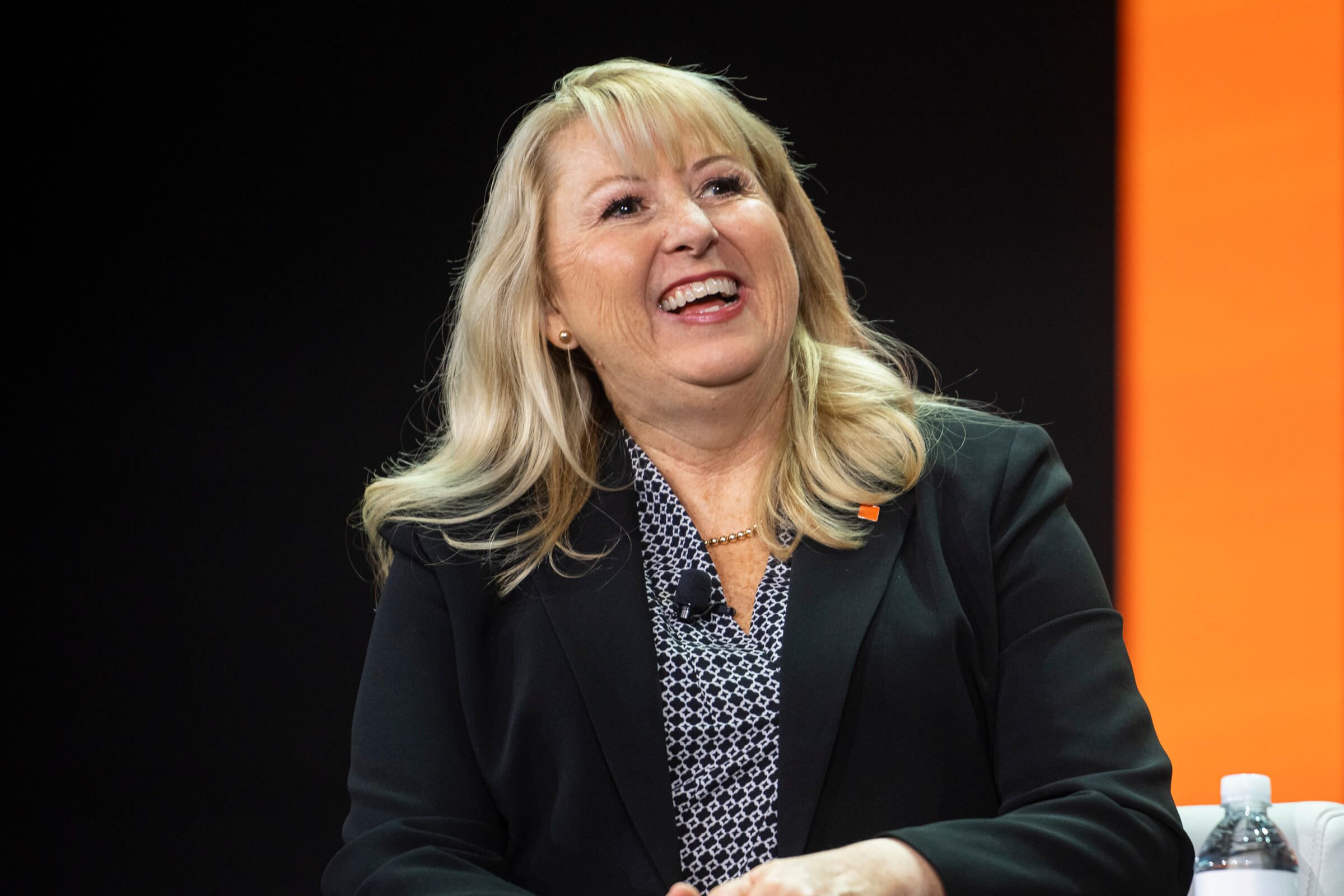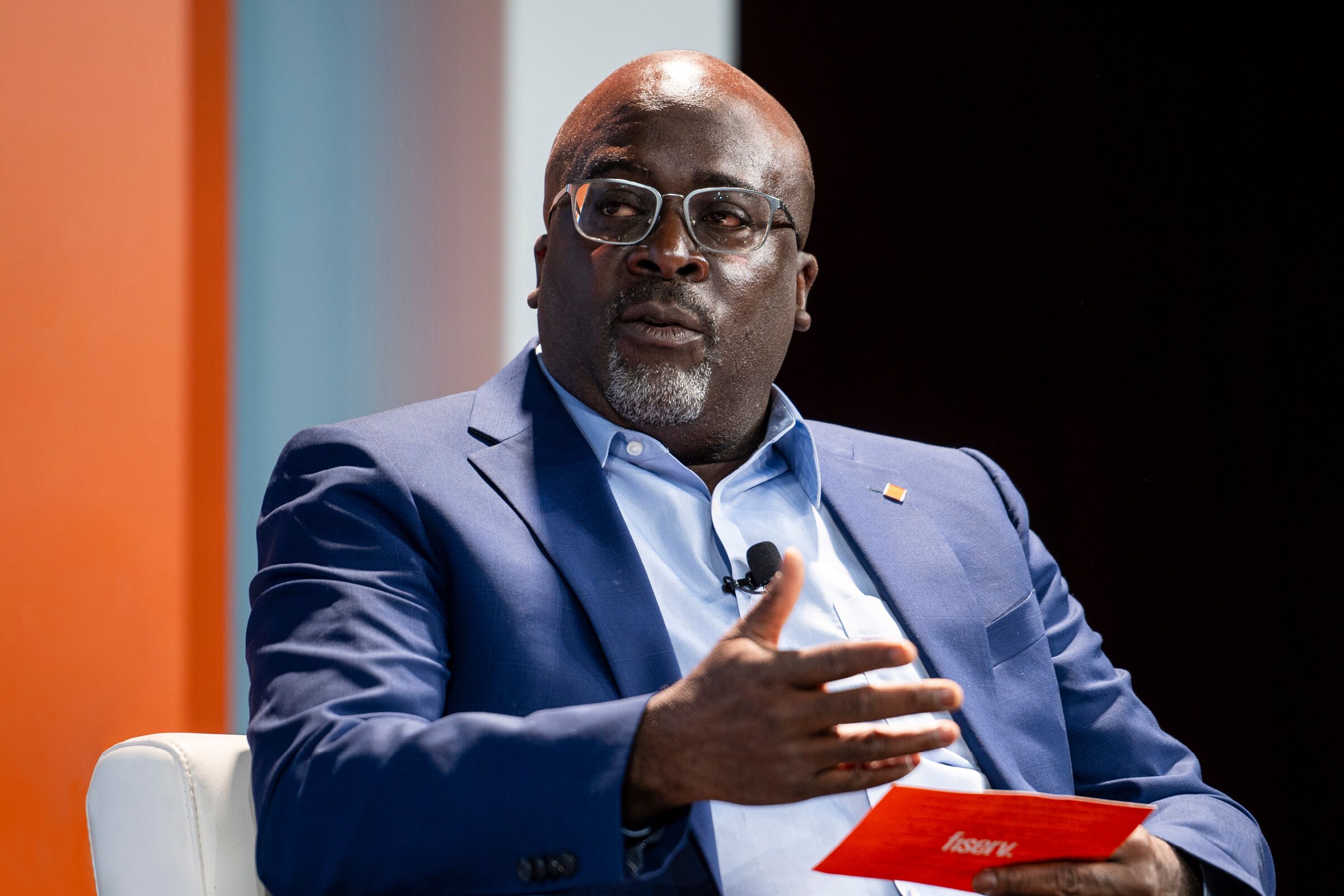Building the next-generation financial institution

Technology, yes; but the customer experience above all
Over the last decade, technology adoption and consumer behavior changes have reimagined how people bank and pay, and the pace of change continues to accelerate. Fintech partnerships, open banking, new digital tools and oceans of data are opening new opportunities and challenges for institutions.
What are the characteristics of a financial institution built to succeed in an environment of ever-rising expectations? At Forum 2023, Fiserv experts shared their vision for the next-generation financial institution: Whitney Stewart Russell, head of Digital and Integrated Solutions; and Dudley White, head of Core Account Processing Solutions. In a wide-ranging discussion, they highlighted developments in data insights, core banking innovation and digital experiences that are driving the future of banking.
This panel session was edited for length and clarity.
What is the fastest-moving trend in the modern financial institution?
White: Data is going through the most explosive innovation today. You’re aggregating banking or credit union data with information from curated relationships you have with fintechs through a third-party app. That new data requires a robust business intelligence capability that provides predictive data analytics. The data piece is incredibly huge for the future of financial institutions.
How do community and regional banks position themselves to become next-generation financial institutions?
Russell: It has a lot do with leveraging digital to reinforce your brand. The digital channel is a way to put your toe in the water as a next-generation bank. Maybe you aren’t ready to go full throttle for a whole new market or business strategy. But boy, you could test in your digital channels and really see what works for you and your customers.
White: As you consider digital transformation, don’t lose sight of the traditional, interpersonal, high-touch aspect of the brick-and-mortar branch. It’s not a case of either/or; the modern bank has to do both.
Russell: And it has to be seamless. You need ready access to the data from interactions customers or members have had in your digital channels and with team members in your locations, and to bring that together in a way that’s really informed and advisory. That’s how you grow relationships and primacy in those relationships.
Whitney Stewart Russell suggests testing in digital channels to see what works for you.
With all the technology changes that are coming, is core conversion a necessity?
White: Today there is a blurring of what is “core.” The thought of a dual-core environment really changes the paradigm. The focus now is not on conversion, but rather coexistence. You can have the DNA platform and Finxact, for example, working side by side to leverage innovation and the digital experience, while maintaining your existing core.
Russell: Still, client experience is king. Core evolution, digital investment and technology investment in general should only be an enabler for creating an awesome client experience.
The customer experience challenge for many community banks relates to the piecemeal architecture they’ve built over time. How is Fiserv addressing that?
White: In the future, you’ll find it a lot easier to integrate cores with whatever best-of-breed surround solutions you want. We’re committed not only to integrating our cores with our internal solutions, but to creating a flexible architecture to enable curated relationships with fintechs as well.
Russell: We also know this has to be an open solution. We’ll make it open and plug-and-play, enabling fintechs to come in and build to our collective UI standards. Everything will look more like a single integrated solution, and I think it will also enable us to be nimbler and more creative.
Dudley White explains the importance of data to the future of banking.
Do you see a future where banking customers put on their Apple Vision Pro goggles and talk to an avatar to do their banking?
Russell: We actually did this about three years ago with a credit union – we simulated a branch in the metaverse. It was not great. I think there are more basic digital functionalities we could do so much more with. The real challenge is to meet customers where they are and deliver a great experience that makes them want to grow their relationship with you and get things done. Then they can go and do fun stuff with their virtual reality goggles.
What does banking look like five years from now?
White: Moving from data to predictive insights that are actionable will be the big change. That kind of data will not only help with transactions and understanding your customer, but also with combatting fraud.
Russell: I think we’re going to be in a much different place in terms of how we use data to anticipate customer needs. The work going on now at Fiserv around open data is a brave new frontier that will change the game and enable our clients to create awesome experiences for their customers and members.
Explore related resources



